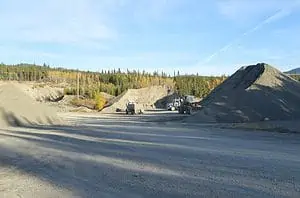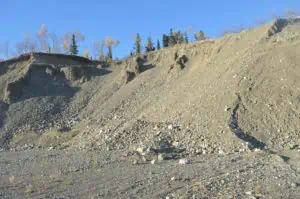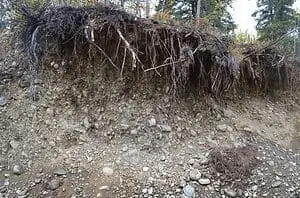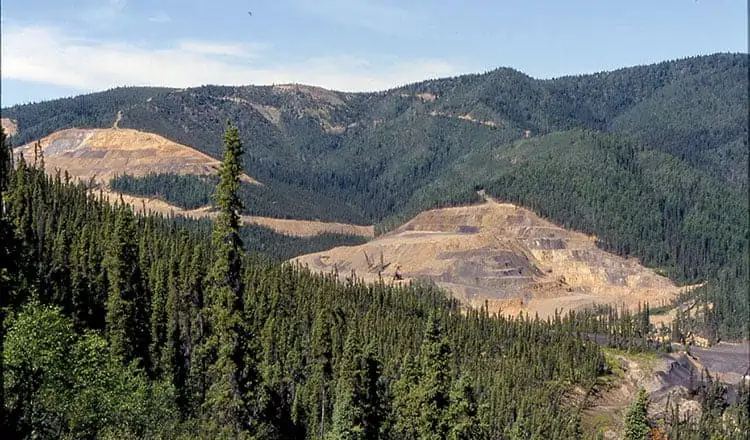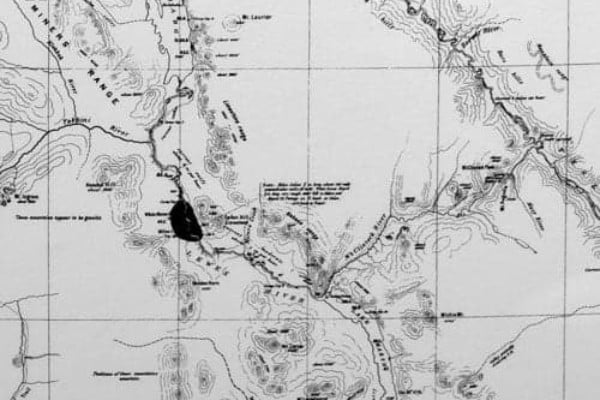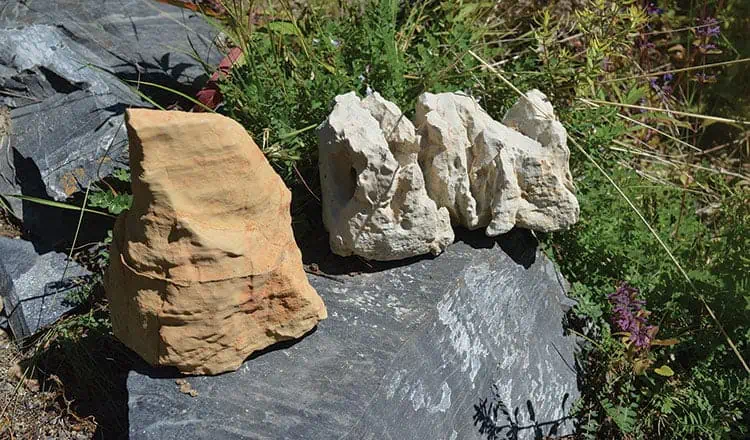If you count Fred Flintstone (who was employed by Slate Rock and Gravel Company), people have used quarries since prehistoric times.
Hieroglyphics show Egyptian use of quarries around 2600 BCE. They used several in construction of the Great Pyramid. Stonehenge is estimated to have been constructed 5,000 years ago. The oldest known quarry in North America dates to the 1600s. It is located in Minnesota and has been used by the Lakota Nation as a source of catlinite or pipestone, a reddish-brown claystone. The rock is carved into ceremonial smoking pipes known as calumets.
A quarry is defined by the American Geological Institute as “an open or surface working for the extraction of building stone.” That includes everything from sand to blocks of rocks weighing several tonnes. In the Yukon, most quarries are commonly known as gravel pits. Gravel is a general description for rock fragments ranging in size from pebbles to cobbles.
Gravel pits are legislated by the Quarry Regulations of the Lands Act. They apply to the extraction of limestone, granite, slate, marble, gypsum, marl, gravel, loam, sand, clay, volcanic ash and stone in a natural state.
Although not as glamourous as a gold mine, sand and gravel are big business in Canada. In 2019 it is reported that production was worth two billion dollars. The Government of Yukon collects a $0.25 per cubic metre royalty on leased private operations. In the Yukon the amount produced every year varies depending whether major projects like Whistle Bend or Alaska Highway widening are underway.
Thanks to the last glaciation 20,000 years ago, the southern Yukon has ample gravel and sand deposits. The best sources are those of glacio-fluvial origin. That means gravels laid down in rivers running off melting glaciers. Glaciers are powerful agents of erosion and transport of rock when they are advancing. When a glacier is melting and retreating, the eroded material is left behind and deposited. Large amounts of sand, gravel and boulders collectively known as drift accumulate.
This material is further reworked by the water from the melting ice. It washes away the fine clay and silt and moves the gravel around. If you have ever been at the toe of a glacier you see piles of various-sized material with many channels of silty streams running through it in a braided pattern. During continental glaciation, everything occurred on a grander scale then what we see in today’s alpine glaciers. During the height of retreat, meltwater channels were the size of large rivers. Evidence of these former channels can be seen in numerous places.
The low area just west of Copper Ridge in Whitehorse in which McIntyre Creek runs, was a major meltwater channel. Cowley Lake and Cowley Creek are the remnants of another. At times during retreat of the continental glaciers the process would stall and large amounts of drift would accumulate in these areas producing a sizeable gravel resource.
In the Klondike area and other areas that missed the last glaciation, gravel is not as plentiful. The three to five-million-year-old White Channel Gravels, are a good source of material around Dawson, as are the dredge tailings. Along the Dempster Highway quarries are located in areas where the rock is naturally weathered and broken, making it easier to extract.
Having sources of gravel close to markets is ideal. Transportation costs can range up to one dollar per cubic metre for every kilometre. That is about $10 per kilometre for your average-sized dump truck. Locating pits close to urban areas makes economic sense, but frequently nearby residents oppose them. The Quarry Regulations require a 30-metre buffer from highways and water bodies and a minimum of 100 metres from residential areas. Municipalities have the authority to require a larger buffer to minimize adverse effects from the operation.
Noise and dust are the most common issues. During processing and stockpiling, portable crushing and screening plants move into a pit for a number of days. Limited daily operational hours are put in place. Wide vegetation strips around the pit filter dust, reduce noise, and provide visual barriers. In some areas of Canada washing of gravel is common, which leads to bigger concerns. Ontario artist Sarah Harmer’s film, Escarpment Blues, documents her fight against expansion of quarries on the Niagara Escarpment.
In addition to sand and gravel, Yukon quarries produce other commodities. Riprap is the term for large pieces of broken rock used for erosion protection. Along the South Access in Whitehorse by the river is local granitic riprap. In Dawson, a quarry east of the airport has been utilized. There is a sandstone pit west of Whitehorse, the red rock is broken and screened to gravel size for use in landscaping. There is a quarry used for clay near Stewart Crossing.
Rock that breaks with flat surfaces is termed flagstone. There are many examples of flagstone used for pathways, patios, fireplaces and fences around the territory. Check along the Millennial Trail between the Visitor Information Centre and the Old Firehall for the beautiful flagstone fence made of local granitic rocks. Next time you drive by “another boring gravel pit,” give some thought to the large number of products quarries produce, that we all use.

